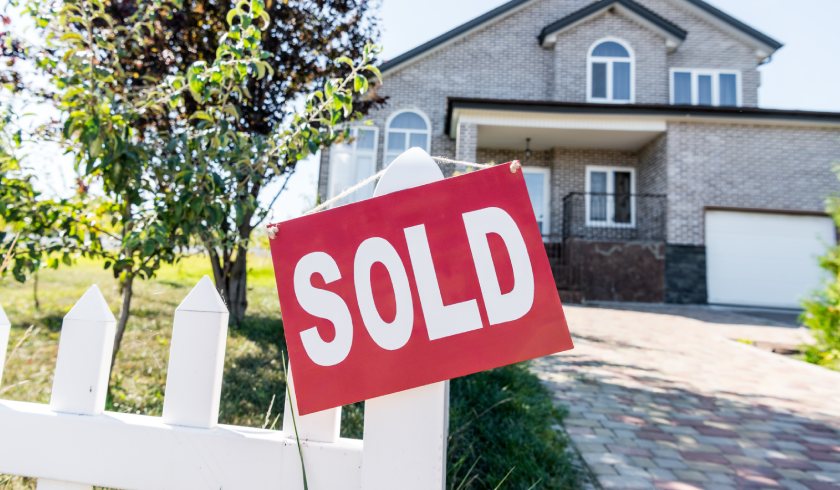More than 1 in 3 Aussie properties cheaper to buy than rent
Having a mortgage is even more likely to be cheaper than renting than it was pre-pandemic, new research has revealed.

CoreLogic’s latest Property Pulse suggested servicing a mortgage is now cheaper than paying rent on 36.2 per cent of Australian properties – and it’s even higher than the pre-COVID proportion of 33.9 per cent reported in February 2020.
Mortgage assumptions relied on an 80 per cent loan-to-valuation ratio, an interest rate of 2.4 per cent and a 25-year loan term. No mortgage fees or transaction fees were assumed.
Across the combined capital cities, the portion of properties cheaper to buy than rent is lower than the national average – sitting at 26.2 per cent.
In contrast, more than half of properties (60.1 per cent) across combined regionals were found to be cheaper to buy than rent.
Of the capital cities, Darwin had the largest portion of properties cheaper to buy than rent at 86.5 per cent, followed by Perth with 59.6 per cent, Brisbane with 55.3 per cent, Hobart with 50.2 per cent, Adelaide with 47.4 per cent. Melbourne and Sydney had much smaller portions at 7.3 per cent and 4.9 per cent, respectively.
Regionally, Northern Territory emerged with the largest proportion of suburbs where it’s cheaper to service a mortgage than pay rent at 96.4 per cent. This was followed by South Australia and Western Australia with 79.4 per cent, Queensland with 73.1 per cent, Tasmania with 71.4 per cent, NSW with 48.2 per cent and Victoria with 43.6 per cent.
According to CoreLogic’s head of research, Eliza Owen, the lower interest costs on mortgage debt since the onset of COVID-19 largely drove the increase in areas where it’s cheaper to buy than rent across Australia.
In fact, RBA data showed that average new mortgage rates for owner-occupiers have fallen from 3.21 per cent in February 2020 to 2.4 per cent in May 2021.
“This is one of the factors that may have boosted sales activity coming out of COVID-19 restrictions in 2020; if it makes more financial sense to pay for a mortgage than rent, renting households may have been triggered to look for something to buy as interest rates have fallen,” Ms Owen said.
However, the reduction of interest costs did not always lead to cheaper mortgage serviceability relative to rents, as in the case of Sydney where property values soared significantly even amid low interest rates, she explained.
Since February 2020, Sydney dwelling values have increased 15.2 per cent, while rents only increased 2.1 per cent over the same period.
“The relatively subdued rental growth may be largely due to a loss of rental demand from stalled overseas migration, where Sydney and Melbourne have traditionally been the most popular destination for international arrivals in the country.
“The combination of lower rent growth and very strong dwelling value growth has meant that even fewer properties across Sydney are cheaper to pay down a mortgage than rent, at just 4.9 per cent – down from 7.1 per cent when the analysis was done with the same assumptions in February 2020,” according to Ms Owen.
To buy or to rent?
But just because mortgage costs are cheaper than rents in certain areas, doesn’t mean people are actually rushing in to buy there, Ms Owen said.
In fact, areas like regional Northern Territory and outback Western Australia, for example – where the proportion of properties cheaper to buy is among the top five across Australia – are seeing higher rental demand, particularly for accommodation that suits a more transitory lifestyle, like properties near FIFO mine sites, she explained.
This dynamic is also echoed – albeit to a lesser extent – across larger, east coast cities.
“The regions where rent payments are more likely to outstrip mortgage repayments generally reflect lower socio-economic areas within a city, where property is not as expensive, but there is demand pressure on rental markets.
“This could be because of affordability constraints on barriers to entry around home ownership, such as a deposit hurdle, professional services or stamp duty payments,” Ms Owen flagged.
In spite of affordability constraints, the researcher has expressed the belief that there’s still potential opportunities arising for first-time buyers across the country.
“The analysis is a good reminder for renters to weigh up housing costs and savings, to see if it is time for a change in tenure,” she concluded.
